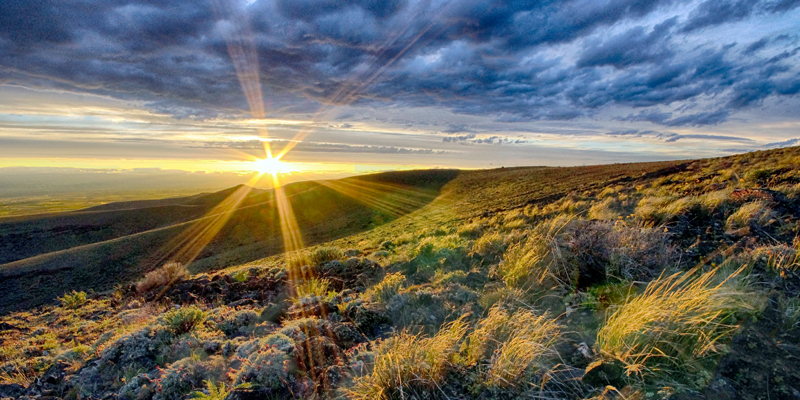
South Central - Region 3
1701 South 24th Avenue
Yakima, WA 98902-5720
United States
Fishing tips and news
New License Year
April 1 marks the beginning of the 2024-2025 license year. Anglers will need to have a current license to take part in fishing opportunities. You can get your updated license in person at the regional WDFW office, online, by phone at 1-866-246-9453, or at any of several hundred license dealers around the state.
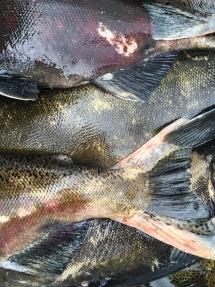
Salmon and steelhead
The 2024 forecast for upriver spring Chinook is 121,000 fish, slightly less than the 141,179 that returned to the Columbia River in 2023, and significantly lower than the 10-year average of 152,289 fish. Spring Chinook usually begin arriving in large numbers to the Columbia River in late March and April.
Salmon fishing is open daily from Buoy 10 upstream to Beacon Rock under emergency regulation. From the Tower Island power lines upstream to the Oregon/Washington border will open April 1. The projected recreational fishing harvest for both upriver and lower river spring Chinook in 2024 is 4,400 adult Chinook kept for the fishery below Bonneville and 500 fish kept above Bonneville. Two sections of the Snake River are tentatively set to open the first of May, dependent upon spring Chinook returns achieving the forecast.
The Columbia River will open for the following dates and locations in 2024:
March 1 through April 5: Buoy 10 line upstream to Beacon Rock (boat and bank), plus bank angling only by hand-cast from Beacon Rock upstream to the Bonneville Dam deadline.
Daily limit 6, including no more than 2 adults, of which no more than 1 may be an adult Chinook. Release all wild steelhead and all salmon other than hatchery Chinook. Salmon minimum size 12 inches. Shad retention is also permitted, no minimum size or daily limit.
April 1 through May 2: From the Tower Island power lines (approximately 6 miles below The Dalles Dam) upstream to the Oregon/Washington border, plus bank angling by hand-cast only between Bonneville Dam and the Tower Island power lines.
Daily limit 6, including no more than 2 adults of which no more than 1 may be an adult Chinook. Release all wild steelhead and all salmon other than hatchery Chinook. Salmon minimum size 12 inches.
Managers will monitor the fisheries, dam counts, and hatchery returns and adjust as necessary in-season.
The Yakima River spring Chinook forecast is 2,400 fish, which is substantially lower than previous years, and lower than the 2023 forecast of 5,500 fish and actual 2023 return of 2,670 fish. No fishery is expected in the Yakima River for 2024.
Walleye
Some of the year’s biggest walleye are caught in the Columbia River in early spring. These fish are preparing to spawn and nearing their highest weight of the year. Walleyes are usually caught in both Lake Wallula and Lake Umatilla. Spots to try for walleye in the Tri-Cities area are the Snake River downstream to Badger Island and from McNary Dam downstream to Boardman.
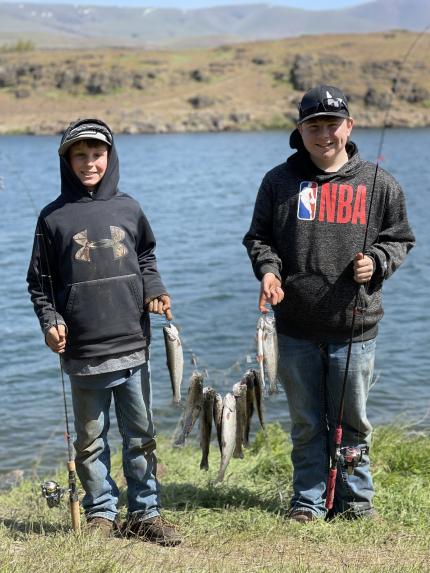
Trout
Many lakes in south central Washington are open year-round, so catchable trout plants began much earlier than other areas of the state. Find more details on our WDFW trout stocking plan.
Lakes already planted are Columbia Park Pond in Benton County; Dalton, and Marmes Pond in Franklin County; Cooper, Fiorito (North), Mattoon, McCabe, and Naneum (juvenile youth only) in Kittitas County; Clear, Lost, Myron, Rotary, Sarg Hubbard Park, and the I-82 ponds. A catch-and-release trout fishery is open year-round on the Yakima River from Roza Dam to Easton Dam under selective gear rules. Fishing is closed above Easton Dam, and on all other tributaries, until the Saturday before Memorial Day.
White sturgeon
The Columbia River and Snake River above McNary Dam are open year-round for catch and release sturgeon fishing, with seasonal closures affecting several reaches. Please review the Washington Sport Fishing Rules for restrictions on sturgeon fishing upstream of the old Hanford townsite and in the Snake River. Remember you must use one single point barbless hook when fishing for sturgeon and fishing at night is not allowed.
Boating safety
With fishing season openers in April, the Washington State Parks and Recreation Commission Boating Program reminds you to take a boater safety education course, if you haven’t already, to be prepared for the season. In Washington, boaters who operate a vessel with a 15-horsepower engine or greater must carry a Boater Education Card to prove they passed an accredited boating safety education course. Keep in mind that wearing a flotation device in, on or around water saves lives as drowning is one of the leading causes of fatalities, especially among young children.
Hunting opportunities and news
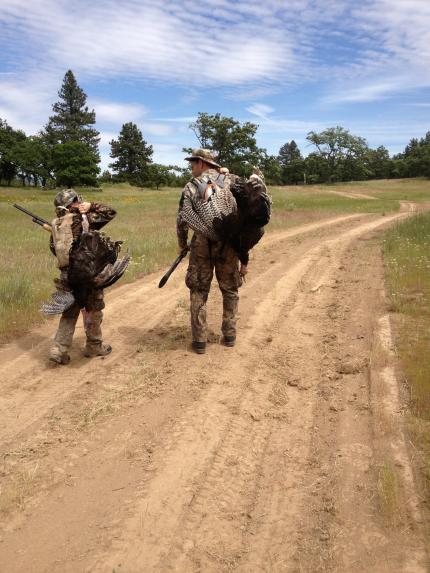
Spring turkey hunting
The statewide spring wild turkey hunting season begins April 15 to May 31 for the general season, and a special youth only hunt takes places April 1-7. For more information, visit the Wild Turkey hunting webpage, and click here for hunting prospects.
If you are interested in giving turkey hunting a try but not sure how to get started or haven't been successful on your own in the past, there are opportunities to be accompanied by an experienced turkey hunter for mentored hunts in northeast Washington. WDFW provides public hunting opportunity not just on Wildlife Area lands but also on private lands enrolled in the Private Lands Access Program. You can also click the hunting prospect link for details.
Hunter education
While fall and winter hunting seasons may be in the rear-view mirror, spring turkey and year-round hunting seasons lie ahead. It is best to prepare ahead of time on taking the hunter education course. These courses reinforce important firearm and hunting safety principles, hunting ethics, basic survival and first aid, wildlife identification and conservation. For more information on Washington State Hunter Education Requirements, visit the Hunter Education webpage.
Wildlife watching and recreation
Earth Day
Saturday, April 22 is the 54th annual Earth Day celebration. Earth Day is a great way to celebrate our natural world and the services it provides like clean air, clean water, pollution control, and food to eat. It’s also a great time to give back to our planet through volunteering. Check out official Earth Day events throughout Washington or our WDFW family educational resources focused on stewardship. These resources are a great way to become a fish and wildlife steward right in, or near your home.
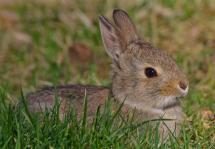
Leave wild babies wild
April is a busy month for the birth of baby animals. If you find fawns, baby birds, or other young animals, please leave them be, even if they appear to be orphaned or abandoned. Most animals have a parent foraging or hunting nearby. Read our blog to learn about when not to rescue wildlife and what to do if you encounter certain species.
Practice bear awareness this spring
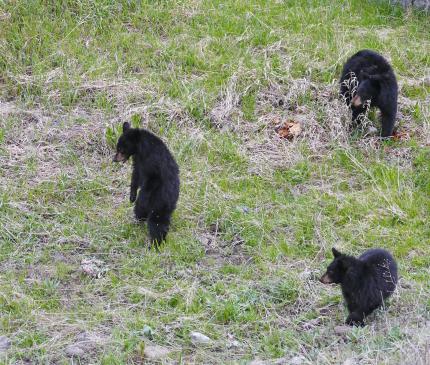
Black bears are common throughout Washington, including suburban areas. Both when preparing for hibernation and awakening from it, they look for high-calorie foods that are easy to obtain. These may include garbage, bird feeders (both seed and liquid), fruit trees, and pet food.
As human populations encroach on bear habitat, people and bears have greater chances of encountering each other. Food sources provided by humans, whether intentionally or not, can attract bears. Removing these attractants is the best way to encourage bears to move along and focus on natural food sources.
Ask your local waste management company if bear-resistant containers are available or if individually purchased bear-resistant containers are compatible with the company’s equipment. Secure your garbage cans, such as in a shed or garage, and put them out the morning of pickup — not the night before. To help reduce odors, freeze meat and fish waste before disposing of it and spray garbage cans with disinfectants.
More information on living with bears is available on our website.
Spring Bird migration
Spring brings lots of bird activity as they migrate to breed. Warmer temperatures and longer days signal birds to leave their winter homes and find places to nest, eat, and find mates. Birds travel thousands of miles, using instincts and clues from their environment to guide them. Some follow set routes, while others take different paths. It's an amazing sight to see flocks of birds flying to their breeding spots.
The Cornell Lab of Ornithology has a dashboard showing real-time summaries of bird migration at night across the United States. It estimates how many birds are migrating, their directions, speeds, and altitudes. You can see migration patterns quickly or check summaries the next morning. The live data is available from March 1 to June 15 during spring migration.
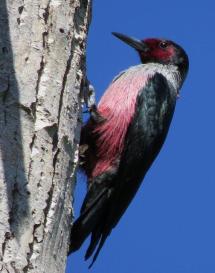
Some popular birding spots across Region 3 are:
- Kittitas County:
- Kittitas Environmental Education Network (KEEN) Trails: Offers various trails through diverse habitats like wetlands, forests, and open fields, attracting a wide range of bird species. Rare sightings may include mountain bluebirds, northern goshawks, and western tanagers.
- Olson Nature Preserve: This preserve near Ellensburg provides opportunities to observe waterfowl, songbirds, and raptors along the Yakima River. Rare sightings might include black-crowned night herons, Lewis's woodpeckers, and yellow-breasted chats.
- Yakima County:
- Toppenish National Wildlife Refuge: Known for its diverse birdlife, including waterfowl, shorebirds, and raptors, within wetland and riparian habitats. Rare sightings might include white-faced ibises, American avocets, and Swainson's hawks.
- Cowiche Canyon: Offers a mix of riparian areas, sagebrush habitats, and rocky cliffs, attracting species such as canyon wrens, Bullock's orioles, and various sparrows. Rare sightings may include northern pygmy owls, black-throated gray warblers, and lazuli buntings.
- Benton County:
- McNary Wildlife Nature Area: Located near the Tri-Cities area, this area features wetlands and riparian habitats along the Columbia River, attracting waterfowl, shorebirds, and migratory songbirds. Rare sightings may include American white pelicans, black-necked stilts, and Swainson's hawks.
- Badger Mountain Centennial Preserve: Offers trails through shrub-steppe habitat, where birders can spot species like sagebrush sparrows, vesper sparrows, and various raptors. Rare sightings might include ferruginous hawks, sage thrashers, and sagebrush sparrows.
- Franklin County:
- Columbia National Wildlife Refuge: Provides diverse habitats such as wetlands, shrub-steppe, and riverine environments, attracting a wide variety of bird species, including waterfowl, shorebirds, and raptors. Rare sightings may include sandhill cranes, burrowing owls, and long-billed curlews.
Sandhill cranes
Large numbers of Sandhill cranes can be observed in Benton County from north Snively Road in West Richland. They will be migrating through the area until the middle of April. The surrounding property is private, but there are a few spots to pull off the county road to observe the cranes. Be sure to park responsibly, off the roadway, and do not trespass on private property.
Another location to see Sandhill cranes is the Windmill Unit of the Sunnyside Snake River Wildlife Area. They can be observed from north Baart, Merion, and Astoria roads in Franklin County near Basin City in a variety of agricultural fields. Sandhill cranes are omnivorous and feed on grains, insects, and small rodents. White-fronted geese are also observed in the same areas as Sandhill cranes this time of year in the lower Columbia Basin.
Eagles
It is nesting season for eagles! WDFW asks the public to report nesting golden eagles here: Report Wildlife Observations to WDFW (arcgis.com)
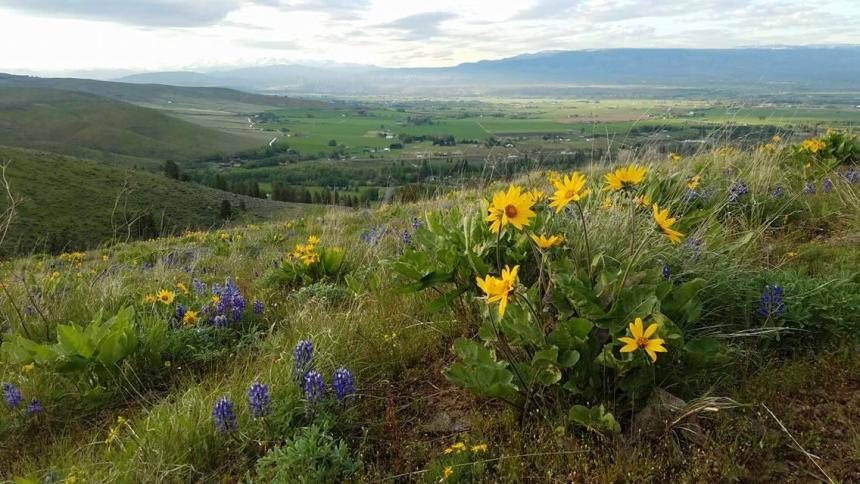
Wildflowers
April marks the start of wildflower season. Look for spring blooms while hiking but remember that picking wildflowers can damage populations for some species of conservation concern. Low elevation hikes include those on the Hanford National Monument and the Sunnyside Snake River Wildlife Area. Juniper Dunes in Franklin County is a BLM Wilderness Area with access from the end of Joy Road a short walk across private land allowed only in March-May. Closer to Yakima, the Snow Mountain Ranch, Cowiche Canyon Trail, and the Skyline Trail are great places to see wildflowers. A useful tool to track the progress of wildflower season is Northwest Wildflowers Bloom Status Map
Annual closures to protect wintering elk
Elk feed sites remain closed this month per annual winter closures. Closures include:
Oak Creek Unit: The Cleman Mountain/Sanford Pasture area and Oak Creek Road (USFS 1400) is closed to motorized vehicles but remains open to walk-in access. Large portions of upland range is closed to all public entry as shown on Green Dot maps.
Cowiche Unit: The unit is closed to public entry south of Cowiche Mill Road as shown on Green Dot maps.
L.T. Murray Unit: Areas surrounding the Joe Watt and Robinson feed sites will be closed to all public entry as shown on Green Dot maps.
Whiskey Dick Unit: A motorized vehicle closure will be in effect through April 30 that extends from the Vantage Hwy north up to the Quilomene Ridge Road as shown on Green Dot maps. There are no changes to this existing closure.
Wenas Wildlife Area: Areas surrounding the Mellotte feed site will be closed to all public entry as shown on Green Dot maps. WDFW is temporarily closing the informal shooting area on Durr Road near Ellensburg to start construction on an official shooting range. The area will be closed to shooting for construction crews’ safety starting March 18 until further notice.
Shed antlers
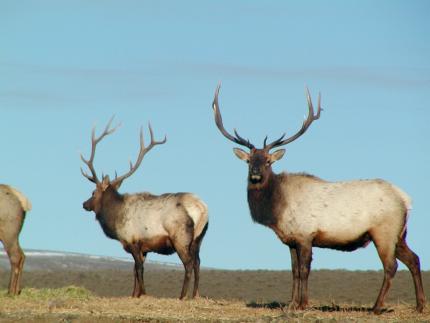
The period of March through April is an especially vulnerable time for deer and elk following winter, and we recommend that shed hunters collecting naturally shed deer and elk antlers postpone activities where wintering animals are present. Winter closures are in effect Dec. 15 – May 1 in areas surrounding feed sites at the Oak Creek, Wenas, and L.T. Murray wildlife areas. This includes strict closures for all access including shed hunting. The easiest antler hunting is, of course, where deer or elk concentrate in the winter. But if many antler hunters descend on that area before wintering animals have left, the disturbance can threaten their survival. Please keep in mind that many public lands across the state may have unique local rules in place, so antler hunters should do their homework before going afield. Additionally, it is expected that users get permission from private landowners before entering their properties.
Negative wildlife interactions
Small animals like raccoons, skunks, and marmots are abundant throughout the region in rural and urban environments this time of year. They can create negative interactions with humans when they make nests in places such as crawl spaces, under porches or corners of garages or sheds in which to give birth. Learn how to enjoy these wildlife neighbors without problems at WDFW’s Living with Wildlife webpages. Remember to keep pet food indoors to avoid attracting these wildlife species.
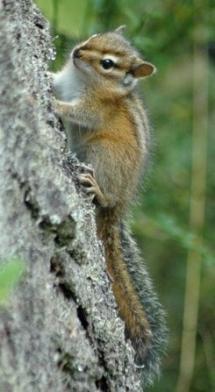
Don’t feed wildlife
Many well-meaning Washington residents enjoy feeding deer and other wildlife in their yards. However, this is a danger to wildlife health. Feeding wildlife concentrates animals where they can spread disease to one another, be hit by vehicles, become habituated to humans, increase their vulnerability to predators, or be physically harmed by foods they wouldn’t normally eat in the wild. You can help wildlife by NOT feeding them. Learn more on our wildlife feeding page.
Visit this page for more wildlife viewing tips.
Conserving species and habitats
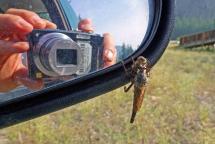
Habitat at Home
Planning a spring-cleaning of an outdoor space? Here’s a few tips to support the wildlife!
Where possible, leave snags and fallen trees to provide habitat, incorporate logs into your landscaping for wildlife shelter, and save cleaning up the leaves and other yard debris until after our first full week of 50° weather – this allows beneficial overwintering insects to hatch or awaken.
Wildlife Program biweekly reports
To read reports published prior to 2023, visit the Biweekly Wildlife Program activity reports page.
Meet your Regional Director - Mike Livingston
Central Region Director
Mike Livingston, the South Central Regional Director (Region 3) grew up fishing, hunting and playing in the forests of southeast Michigan. He received a bachelor’s degree in Conservation from Northern Michigan University, a bachelor’s degree in Fish and Wildlife Management from Michigan State University and a master’s in Wildlife Science from New Mexico State University.
Since 1996 Mike has worked in eastern Washington and held wildlife biologist positions with the Army’s Yakima Training Center, the Yakama Nation, and WDFW as District Wildlife Biologist in the Tri-Cities. In 2012, he was promoted to his current position as WDFW’s Region 3 Director. As Regional Director, he oversees operations in the region and gets to work on big collaborative conservation projects such as the Yakima Basin Integrated Plan. When not working, you can often find him outside with his: family, friends, dog, shotgun, fishing rod, and/or backpack.